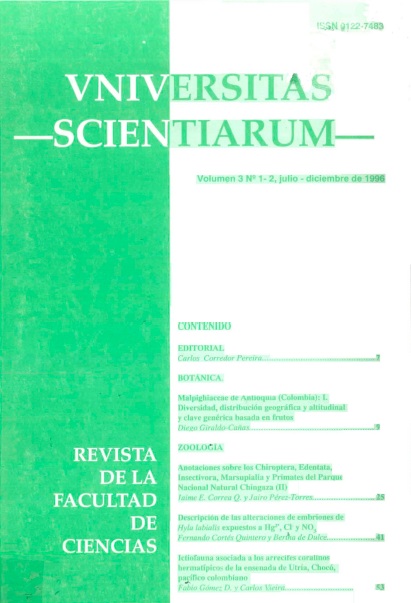Abstract
Estimates on population density were made for 24 species.of mammals and 5 species ofbirds, all of relatively large body size (> 45 cm long), during 13 months at Tinigua National Park, Colombia. These estimates were made using a variation of the line transect sampling method. The primates were the most abundant group in the study area in terms of individuals per Krn2. In terms ofbiomass, Tayassu, Tapirus and Mazama were also important. Temporal variation in the estima tes was found (> 20% for all species), and this seems to be related to changes in habitat use. In spite of these variations, the density estimates found for four primate species were very el ose to those found using data oflong term studies (number of individuals per group and home range). Therefore, it is proposed that the method used could be appropriate to estímate population densities for sorne species.Univ. Sci. is registered under a Creative Commons Attribution 4.0 International Public License. Thus, this work may be reproduced, distributed, and publicly shared in digital format, as long as the names of the authors and Pontificia Universidad Javeriana are acknowledged. Others are allowed to quote, adapt, transform, auto-archive, republish, and create based on this material, for any purpose (even commercial ones), provided the authorship is duly acknowledged, a link to the original work is provided, and it is specified if changes have been made. Pontificia Universidad Javeriana does not hold the rights of published works and the authors are solely responsible for the contents of their works; they keep the moral, intellectual, privacy, and publicity rights. Approving the intervention of the work (review, copy-editing, translation, layout) and the following outreach, are granted through an use license and not through an assignment of rights. This means the journal and Pontificia Universidad Javeriana cannot be held responsible for any ethical malpractice by the authors. As a consequence of the protection granted by the use license, the journal is not required to publish recantations or modify information already published, unless the errata stems from the editorial management process. Publishing contents in this journal does not generate royalties for contributors.



